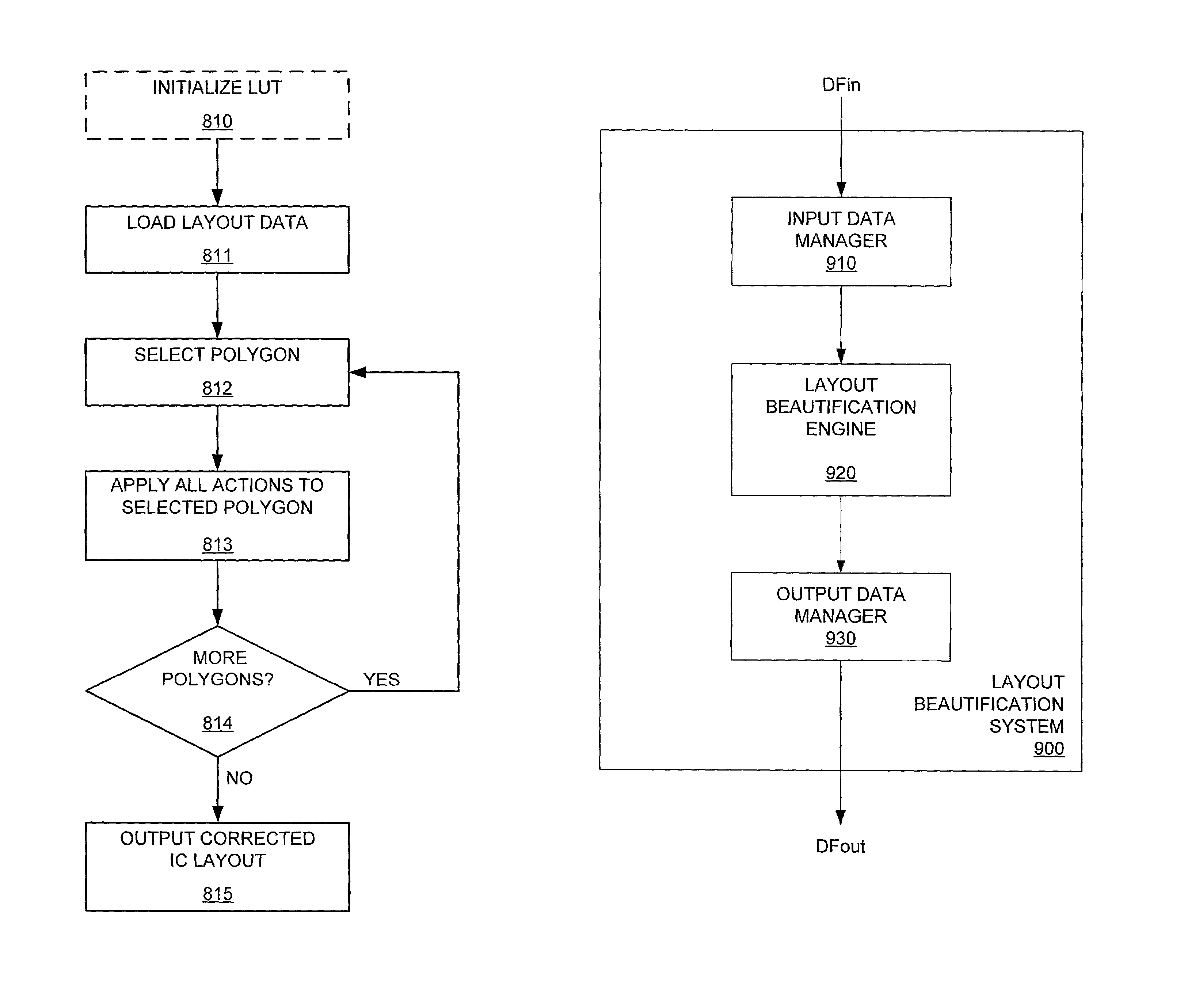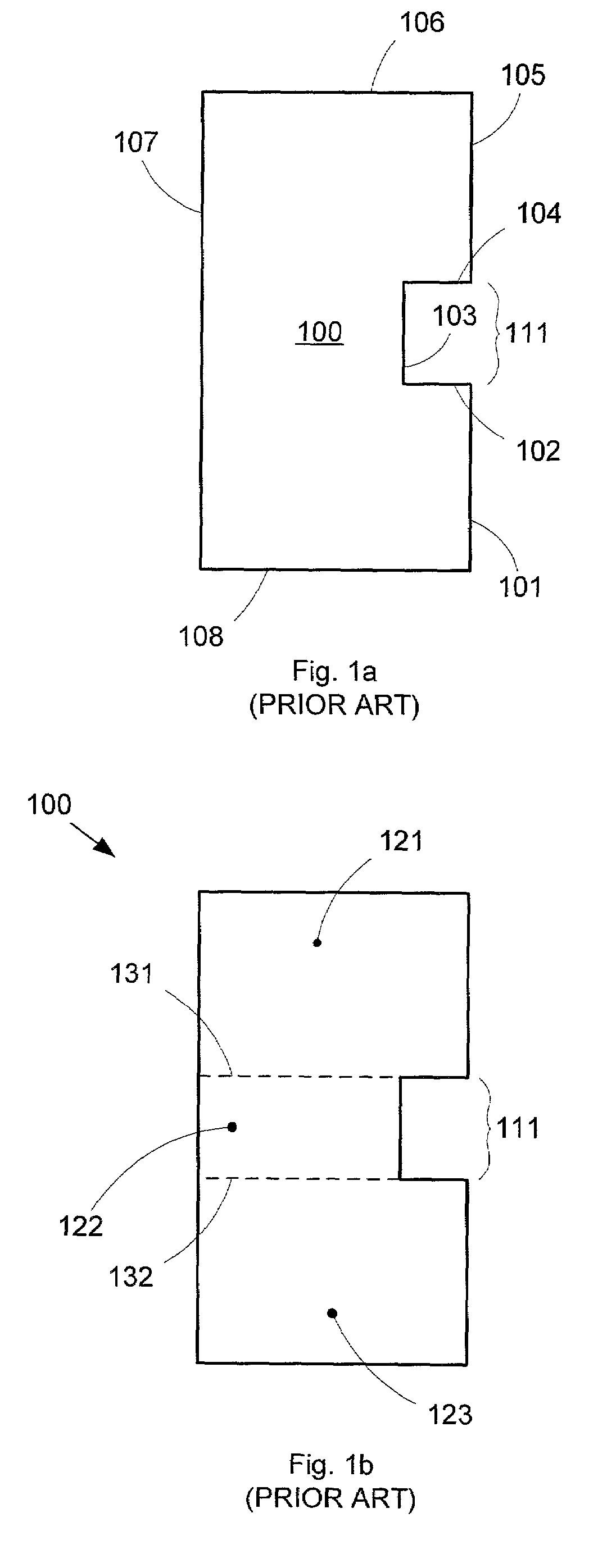Shape-based geometry engine to perform smoothing and other layout beautification operations
a geometry engine and layout technology, applied in the field of integrated circuit layouts, can solve problems such as layout imperfections, adversely affecting layout printability or device performance, and polygons that make up the actual ic layout might include unintended irregularities, and achieve the effect of efficient layout beautification
- Summary
- Abstract
- Description
- Claims
- Application Information
AI Technical Summary
Benefits of technology
Problems solved by technology
Method used
Image
Examples
Embodiment Construction
[0028]An embodiment of the invention provides a system and method for performing layout beautification on an IC layout using a shape-based approach. The shape-based approach advantageously enables accurate and efficient identification and correction of undesirable layout imperfections.
Shape Definition
[0029]In accordance with embodiments of the invention, “shapes” can be defined as groupings of associated directed edges and vertices (i.e., points at which two directed edges meet). The direction of an edge determines which side (left or right) of the edge faces the inside or outside of the shape. For example, FIG. 2a shows a sample shape 200 that comprises a series of directed edges 201–208. Shape 200 has a substantially rectangular outline, with edges 202–204 forming a small notch 211 in one side of shape 200. The counter-clockwise direction of edges 201–208 means that the left sides of edges 201, 203, and 205 face the inside of shape 200.
[0030]Each shape represents a type of feature...
PUM
| Property | Measurement | Unit |
|---|---|---|
| angle | aaaaa | aaaaa |
| angle | aaaaa | aaaaa |
| length | aaaaa | aaaaa |
Abstract
Description
Claims
Application Information
 Login to View More
Login to View More - R&D
- Intellectual Property
- Life Sciences
- Materials
- Tech Scout
- Unparalleled Data Quality
- Higher Quality Content
- 60% Fewer Hallucinations
Browse by: Latest US Patents, China's latest patents, Technical Efficacy Thesaurus, Application Domain, Technology Topic, Popular Technical Reports.
© 2025 PatSnap. All rights reserved.Legal|Privacy policy|Modern Slavery Act Transparency Statement|Sitemap|About US| Contact US: help@patsnap.com



